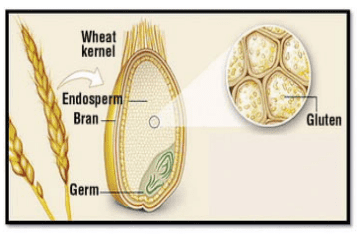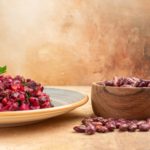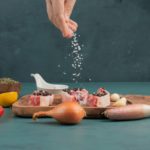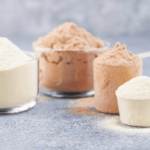
Anna W.
Bachelor of Science
For the newest articles on coeliac disease, we suggest to start with Coeliac Disease: Symptoms and Effects on our health and body, which is the first article in a 3-part series.
Over the years, gluten has received a bad reputation, which means that sugar is no longer the top villain out to get us. Gluten has taken over and it is everywhere – it’s in our bread, pasta, cakes, biscuits, and even our ice cream may not be safe anymore, especially if you have coeliac disease.
But what is gluten exactly? What is its purpose? Is it really the villain we make it out to be? To answer these questions, let’s drill into the food science behind gluten.
What is gluten?
Gluten is a general name for proteins found in grains such as:
- Wheat and wheat berries
- Rye
- Barley
- Spelt
- Kamut
- Triticale (wheat hybrid) and
- Kamut
However, gluten is not the only protein found in grains. For example, wheat also contains albumin and globulin proteins.
Gluten is a major storage protein and provides nutrients for the plant as it grows from a seed into a seedling during germination.[1]
When it comes to food, gluten plays a special role. The word gluten comes from the Latin word for glue.
While it is true that gluten contributes to holding the dough together, we are still capable of breaking down or digesting this “glue”.
The role of enzymes in digesting gluten
Our bodies have amazing mechanisms in place for digesting foods, such as the enzymes in the small intestine that are capable of breaking down gluten and other hard-to-digest parts.[2]
We should also consider that gluten does more than just hold the dough together. Gluten is made from two main classes of proteins, which are gliadins and glutenins.

These two different classes of proteins give the bread certain characteristics.
The glutenins provide the dough with elasticity, while the gliadins provide viscosity. Overall, this gives bread its classic, chewy, soft texture.
As the bread bakes, the yeast in the bread releases carbon dioxide. Gluten allows little air pockets to expand in the dough. The gluten then sets and ultimately this process is what gives bread its fluffy texture.[1]

Food scientists have been experimenting with utilizing the properties of gluten for years. However, this may be where the confusion emerged. Many of these packaged, easy-to-grab food products that contain gluten are also high in calories, fat and sugar. Switching to gluten-free may, therefore, lead to a diet focused more on fresh, unprocessed foods, which is the basis of a healthy diet.
The key here is that unless you have to avoid gluten for medical reasons (e.g. coeliac disease or gluten sensitivity), gluten is not inherently bad for you and it is important to focus on a balanced diet where processed foods are limited.[2]
If you would like to know when similar articles will be coming out, you can Subscribe to our Newsletter and we will let you know well in advance. Also, you might want to visit Connecting you with Food for more articles about gluten-related topics.
References
(1) Fernández-Pérez, S., Pérez-Andrés, J., Gutiérrez, S., Navasa, N., Martínez-Blanco, H., Ferrero, M. Á., . . . Rodríguez-Aparicio, L. B. (2020). The Human Digestive Tract Is Capable of Degrading Gluten from Birth. International Journal of Molecular Sciences, 21(20). doi:10.3390/ijms21207696
(2) Harvard Health Letter. (2009). Getting out the gluten.






